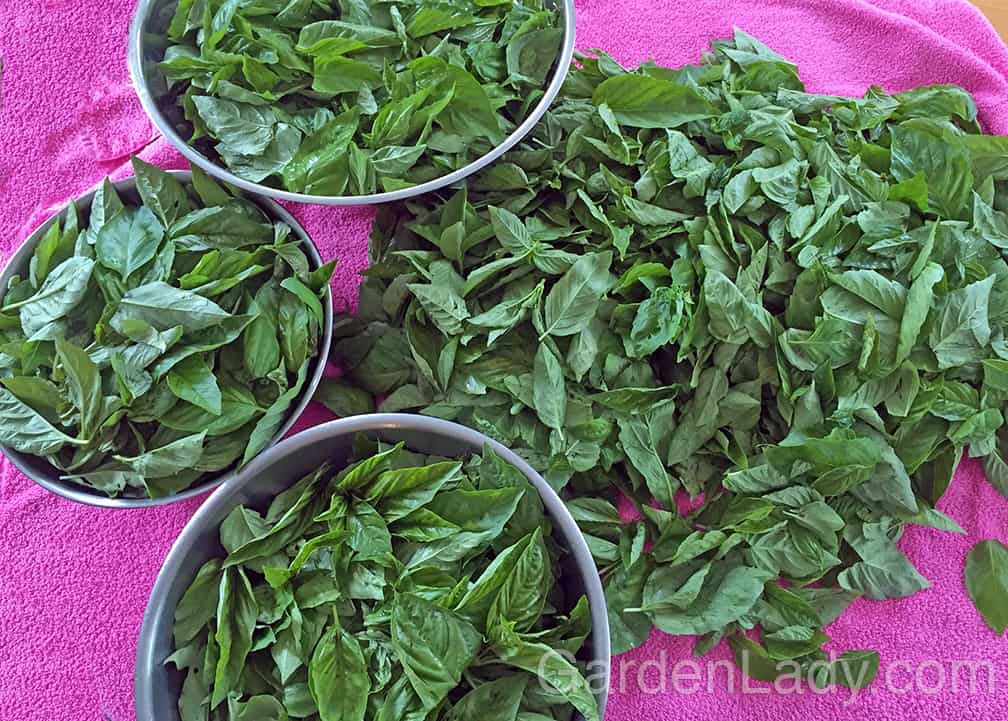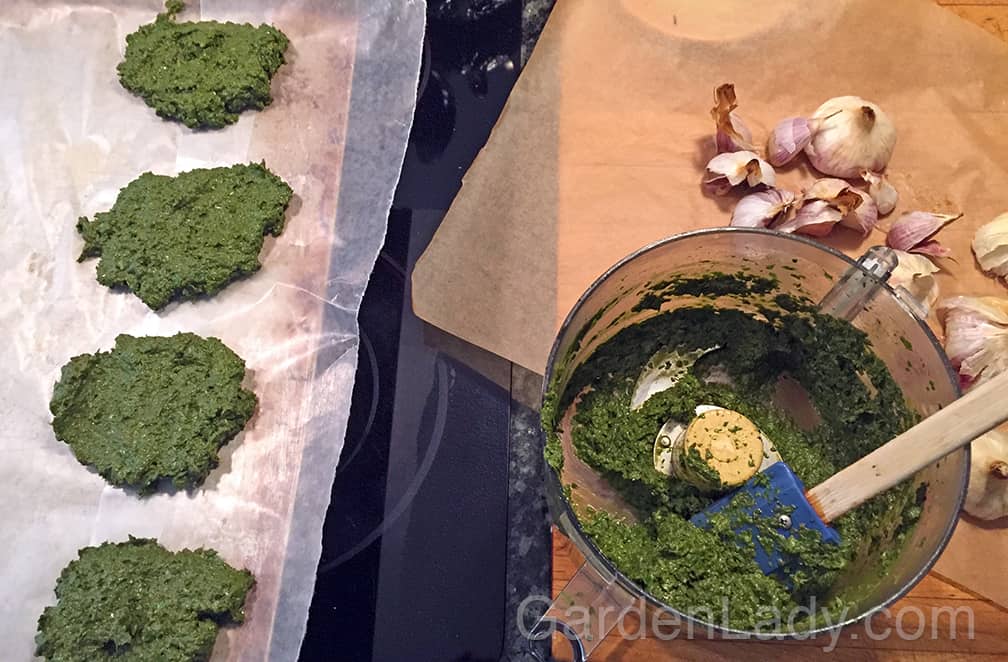Make Pesto!
Yes, once again our Italian basil is rapidly moving from robust growth to a premature death due to basil downy mildew. (Read all about this at this excellent site from Cornell.) We’ve danced with downy mildew in the past, and it seems that we’ll be tangoing with this disease into the future. But we’ve learned to recognize its arrival and as soon as it’s spotted, we hurry to cut the basil and make pesto. Fortunately, downy mildew is edible.

The first sign of downy mildew is the yellowing of the leaves. This disease progressed quickly once you see this, so don’t wait to cut the basil once the foliage starts to turn.

We cut the tops off all the plants, wash them in a tub and then pick the leaves off. Any leaves that have started to blacken from the disease are discarded, but all the others are put into the pile for pesto. A few random arugula and pak choi leaves usually get included as well.

The basil leaves, garlic and olive oil go into the food processor with a dash of salt. I like to use oven-roasted garlic in my pesto since I don’t do well with raw garlic. Either is fine. Once the pesto is blended we flatten small patties on waxed paper and freeze. These are then piled into plastic freezer bags for storage. I like freezing the pesto in patties because they are easy to break up into pieces if I just need a little bit of basil for a tomato sauce or soup. All the other ingredients that sometimes go into pesto served on pasta – nuts, cream etc – can be added later as desired.

0 Comments